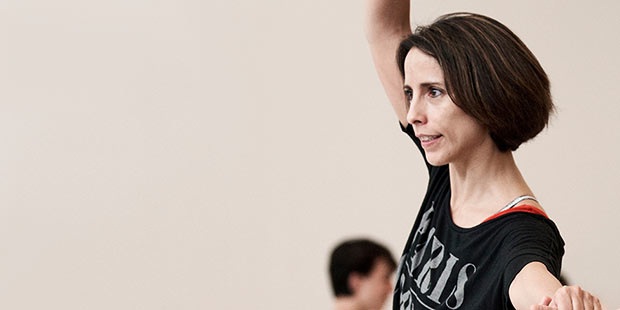
© Erik Tomasson. (Click image for larger version)
San Francisco Ballet’s 2018 Unbound Festival of New Works, presents 12 premieres and runs from the 20 April until 6 May 2018. Full details.
www.annabellelopezochoa.com
www.sfballet.org
Annabelle Lopez Ochoa is in rarified company, as one of twelve choreographers – and one of only two women dance makers – invited to create a world premiere for San Francisco Ballet’s Unbound Festival of New Works. SFB artistic director Helgi Tomasson commissioned 30-minute ballets from Lopez Ochoa and Alonzo King, Christopher Wheeldon, Justin Peck, Myles Thatcher, Cathy Marston, David Dawson, Stanton Welch, Trey McIntyre, Edwaard Liang, Dwight Rhoden and Arthur Pita. Their widely varying creations are to be seen over the 17-day season that started on 20 April 2018.
The artists received a three-week creative residency, two dozen dancers to work with and near-total creative freedom, which they’ve used to explore topics like the gender binary (Thatcher), social-media addiction (Wheeldon) and American literature (Marston). For her first SFB commission, Lopez Ochoa took inspiration from Picasso’s epic painting Guernica, about the Nazis’ 1937 bombing on the tiny Basque village, and the recent chemical attacks in Syria.
Her austerely passionate, flamenco-inflected contemporary ballet, also called Guernica, centers around two principal couples who wear horn headpieces; they’re flanked by a corps of twelve whose choreography strives to evoke Cubism in three real, dynamic dimensions. The score combines recorded electronica by Joe Andrews, Michel Banabila and Tom Halstead, and a solo piano piece by Charles Valentin-Alkan.
The afternoon before Guernica premiered, we sat down over coffee in the SFB choreographer’s lounge and talked about her artistry, her SFB experience and the no-regrets fearlessness she’s taking away from Unbound.

© Erik Tomasson. (Click image for larger version)
CB: Why did you do a ballet based on Guernica?
ALO: First of all, I love painters. Broken Wings (English National Ballet, 2016) was on the life of Frida Kahlo, Sombrerismo (Ballet Hispánico, 2013) was Magritte. When I was invited [to do Unbound], I thought, Okay, I want to do something on Picasso. But it’s a big subject. On the 7th of April 2017, a video came out on CNN about a chemical attack on a tiny village in Syria. My reaction to seeing the images of children suffocating and not being able to do anything – I just pressed the stop button. I couldn’t face it. I felt such a hypocrite. I was really angry at myself because I’m just watching. I thought, what can I do as an artist? Because I can use my art to talk about this.
It sort of parallels with Picasso. He was busy on a piece, and then Guernica happened, and he decided to stop what he was working on and do a piece about Guernica, which is a tiny little village. I thought, I’m going to honor him with the gesture of an artist. So, the piece that I made is not a replica of Guernica, it’s not a replica of Syria. It’s just an ode to what is Cubism, what is Picasso, the power, the aggression, the scream of that painting. I started with the symbolism in the painting. The biggest symbolism is the bull. Very early on Picasso decided that the bull was his alter ego, so I decided to put the image of the bull. The bulls were going to be the two principal men, so we had horns for them. The two horns arrived, and [principal dancer] Dores [André] was like, ‘Let me try those.’ So I was like, you are the female bull. It was almost like it would be a discussion between me and Picasso.

© Erik Tomasson. (Click image for larger version)
When you talk about your inspiration, you describe doing something about the tragedy in Syria. When you talk about the ballet, you’re talking more about Picasso and his methods and his symbolism. How are you making the connection between them – the question of ‘What can I do with my art to make the world a better place?’
I don’t know if we can make the world a better place, but we can definitely have the audience think about it. Art can be a scream for, ‘We need to acknowledge and witness what is happening.’ And maybe people with power can do something about it. I’m not a politician, and I’ve chosen not to be a political artist, because I don’t have enough knowledge about it. The war in Syria is so complicated, I don’t understand it. Art can speak. And what I find so beautiful about Unbound, is all these pieces speak for the beauty of the body and the movement, or the beauty of the music. I want my piece to speak about something. I can use the beauty of my art to have people think and remember that this is happening right now.
How did you bring your inspiration into being?
First, the music. I was asked by [SFB Orchestra conductor] Martin West to use orchestral music. I did my best, but everything I came up with was almost too beautiful. I made a compromise with him; it’s now three electronic pieces and one solo instrument. [Choosing] the music was very much looking for that jarring, aggressive music.
The first week was very hard. I always have a question before I start a piece, and that question was, ‘How can I make Cubist movement? What is that?’ It took me a while because I think my movement is not Cubist, it is very fluid and it moves a lot in space. [In the studio] we did phrases, we workshopped duets. After a week I thought, I’ve found it. I have very static duets, they don’t move, one behind the other, which I have never done before, so it enriched my vocabulary.
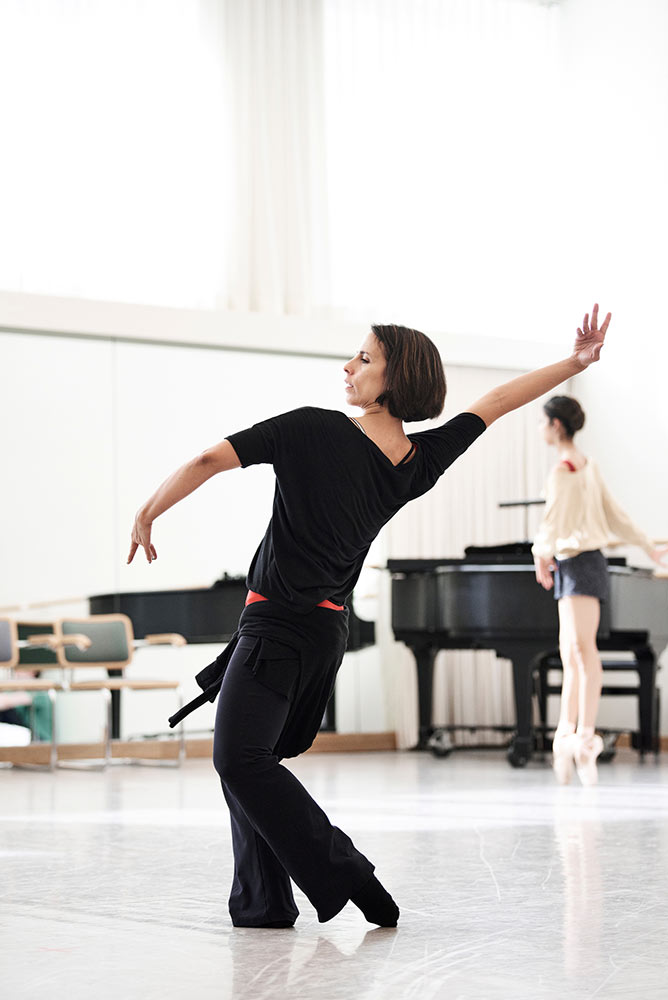
© Erik Tomasson. (Click image for larger version)
Another big thing is the bullfighting, because Picasso’s first sketch was of a bullfight, when he was 9 years old. I thought, in a bullfight you have an aggressor and a victim. Really, the bull is the aggressor but also the victim at the end. So we have circles in the piece, and we have bulls against each other.
You’ve taken on this very loaded painting, you’ve titled it the same. It’s something that everyone is going to have a response to. As an artist, are you at all anxious about the responses that people might have?
Yes, yes. A painting is one thing, but there is so much in it. I cannot put so much in one [ballet]. The three first sections is the painting, and the last duet is, ‘Love will prevail. Let’s not forget there are human beings bombing. And why are they doing that? Let’s call upon our humanity.’
And of course, the painting was a humane response from Picasso.
Yeah. He didn’t put the love, he only put the bull. [laughter] No, I am really anxious about the reaction.
Unbound is about taking that kind of gamble. How has the festival experience been for you?
It’s been amazing. We’re all [the choreographers] very busy, but usually we’re alone. We share an evening with a deceased choreographer, and it’s usually his best work, it’s a piece that works for the company – they already know it, they’ve performed it, the stager came, they know the lighting cues. And it’s you, alone, trying something out. You’re very vulnerable. Now, we’re twelve vulnerable people. You could watch snippets of people’s tech [points to video equipment in the lounge], and they all looked wonderful. And then people went onstage the first time without costumes and they danced, and everybody got really depressed. Like, ‘Oh my god, what did I do!’ We all went through it. We had the same curve, and it was so wonderful to feel the support, and sharing the stories, and feeling like, ‘Oh, I’m not the only one who is depressed in my hotel room.’ There has been so much support. I hadn’t expected that.

© Erik Tomasson. (Click image for larger version)
Everyone got just three weeks to create a 30-minute work, but you’re accustomed to working fast.
The first week, I had my writer’s block. I’m making a piece about someone, and they have an energy. I’m trying to sense, what is their energy? How would you define someone that you’ve never met? I felt like I put a big burden and task on me, and I was following that and I tried to stay true to it. That was the hard part – it was not just music and movement and how I felt that day.
It’s funny how something can seem like a great idea at the time…
Ha ha!
How have you liked working with the SFB dancers?
They are incredible. They can morph from one style to the other, and they are in for the ride. They are fast, they are used to working with just a couple of rehearsals, so they help each other sometimes. Jim Sofranko had to go away because he is taking over the company in Grand Rapids [Michigan, where he will is the incoming artistic director], so one dancer said, ‘I’m not in this cast, but I know the duet.’ Jim helped him, and the next day the guy did it. I said, ‘I have no corrections for you.’ It was flawless. And it was Joseph Warton, a 19-year-old trainee. That’s how tight they are. Just for me to have a good run-through, they made that effort.
Do you think Unbound has been effective in terms of Helgi’s goal of seeing where ballet is at today?
I met him at a symposium at Dutch National Ballet last February [2016]. I introduced myself and said, ‘You invited me to the Unbound Festival. Thank you, thank you, thank you.’ He said, ‘Just do whatever you want. Don’t do something that you think I’m expecting.’ My jaw dropped. Usually you go to companies, you watch a video, I can feel what is the style of the company, I can feel what is the taste. [The Unbound programming] is so stretched out, going from Myles [Thatcher] to David Dawson, from Alonzo [King] to [Justin] Peck. That’s really Helgi honoring what ballet can be, and opening the eyes of the audience: ‘We are all this.’ We [choreographers] know that we are very blessed to do this, and we’ll look back in ten years and go, ‘I was one of the twelve!’ It’s really his legacy. Maybe it’s age – you don’t care so much what people think when you are older. And I think it’s his fearlessness and maturity, he’s like, ‘What do I have to lose? What is my legacy?’ He’s such an example to us.
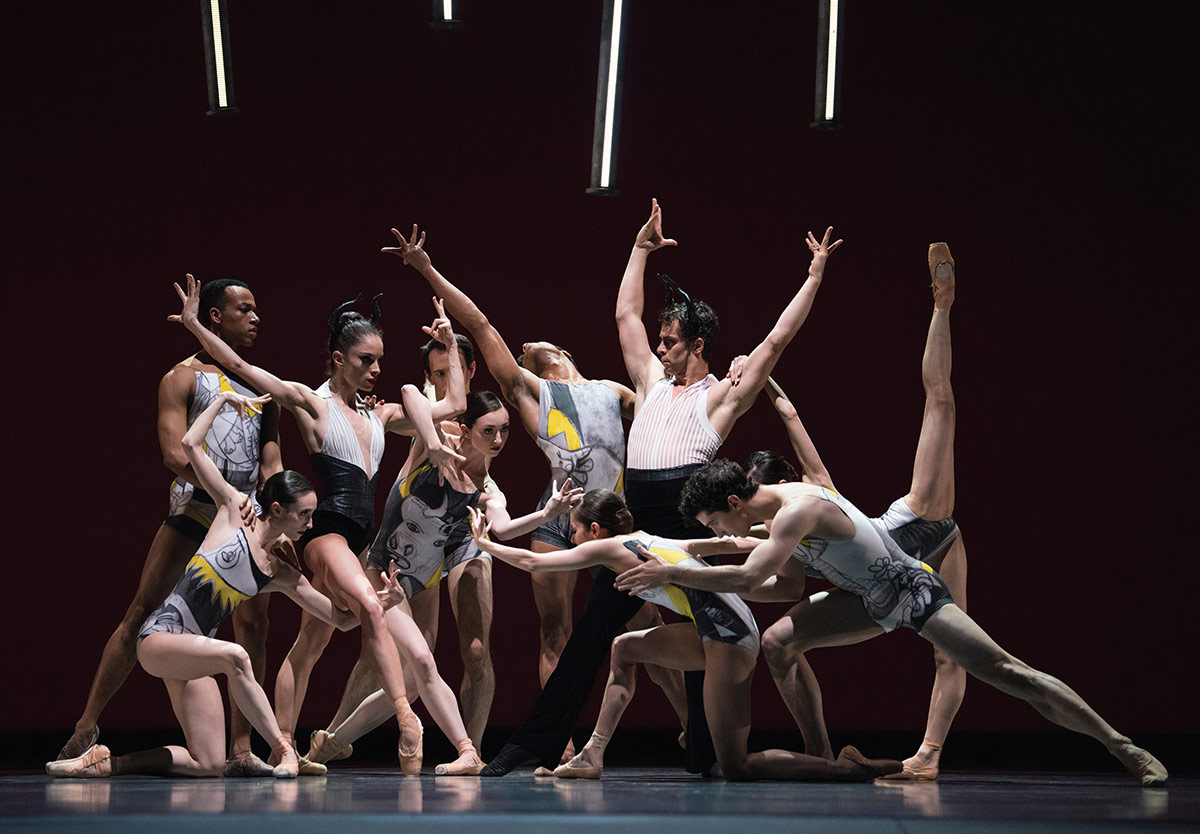
© Erik Tomasson. (Click image for larger version)
What will you take away from this experience, as an artist or as a person?
You know when you’re young, you want to belong? And therefore you dress a certain way, or you make your first piece and you think you’re gonna make it for the director to like it, so you get another opportunity? That’s what you do in the beginning. Fearlessness is what I’m taking from this. Just being you. When I turned 40, and my partner had a heart attack, suddenly I was awake to our mortality. We all have that date. And some of us, it’s in five years, it’s tomorrow, it’s in fifty years. So what is it that you want to say until then? [After] experiencing this, I am just gonna do what I want. And people might hate it, but at least I did it. And I won’t look back and say, ‘That’s a shame I didn’t do that one.’ I think Helgi instilled us with that inspiration of, don’t lose time. Do it now. Say it out loud, and let people think what they will.
You’re now working on Vendetta for Les Grands Ballets Canadiens de Montréal (opening 24 May 2018)
I’m not a choreographer that will do a new version of Giselle or a new version of Nutcracker. I believe that we need new stories. We need to give it to our audiences. [Vendetta] is not the story of The Godfather, but it’s based in the Mafia. The godfather has four children, one daughter, and he chooses his daughter to be the next godfather. It’s about the rise of a woman in a violent male world. After the whole discussion in London about stories where women always lose, or always need a prince to save them, I wanted to turn that around. We need to have people writing different characters, different storylines for women in ballet. So that’s my next big project.
Well you certainly don’t hesitate to take on big things. Although, I would love to see a Nutcracker done by you. I can only imagine what you would do with it!
[laughter] Who knows! I want to be in that other genre that says, ‘Hey, a new title.’ That would be amazing, actually, if I could be remembered as someone who brings new stories, and hopefully inspire young choreographers. Come on, let’s make an effort.








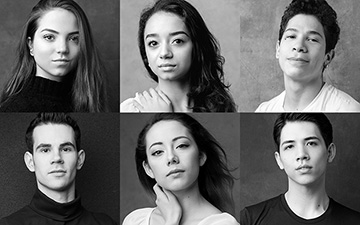
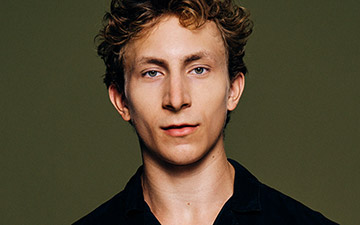


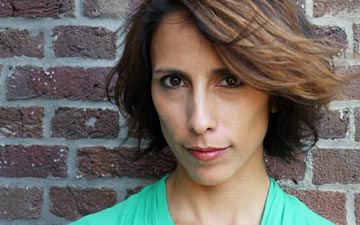

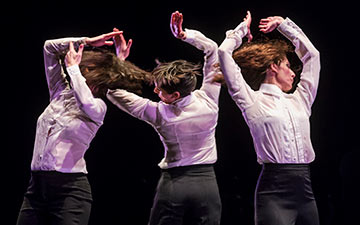

You must be logged in to post a comment.